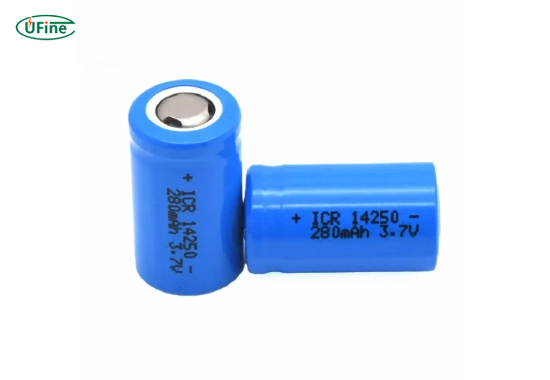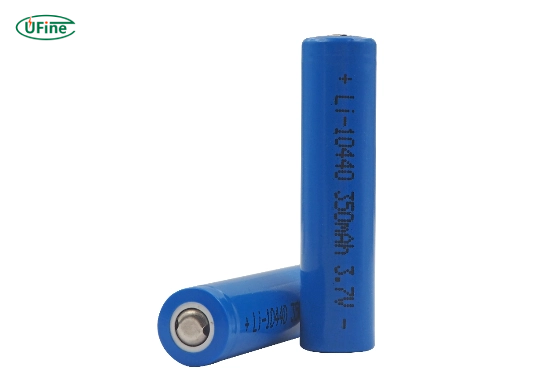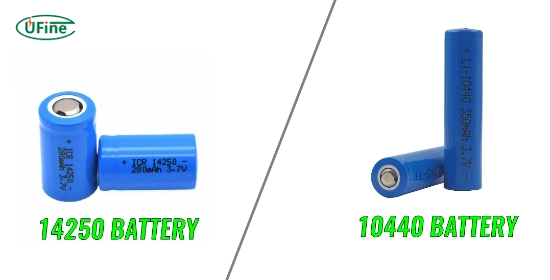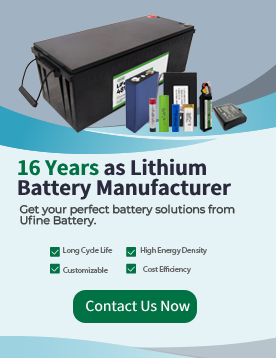What is the difference between a 14250 battery and a 10440 battery? The 14250 battery is a short, wide lithium-based cell often used in low-drain, long-life devices. At the same time, the 10440 is a slim, rechargeable lithium-ion battery commonly found in compact electronics like flashlights and gadgets.
Choosing the right battery isn’t just about size—it’s about performance, compatibility, longevity, and safety. In this in-depth analysis, we’ll compare these two popular battery types—14250 vs. 10440—to help you determine which is best for your device.
Part 1. What is a 14250 battery?
The 14250 battery is a lithium-based cylindrical cell named for its physical dimensions: 14mm diameter and 25mm length—hence the name.
It is typically available in two types:
- Primary (non-rechargeable): Lithium-thionyl chloride (Li-SOCl₂)
- Secondary (rechargeable): Lithium-ion (Li-ion)
Key technical specifications:
- Nominal Voltage: 3.0V (Li-SOCl₂) / 3.6V (Li-ion)
- Capacity: 800–1200mAh
- Discharge Current: 1–2A (continuous)
- Shelf Life: Up to 10 years (non-rechargeable)
- Operating Temperature: -55°C to +85°C
Common applications:
- Smart meters
- Military-grade devices
- IoT sensors
- Alarm systems
- GPS tracking
The 14250 is primarily known for its long-lasting performance in low-drain environments.
Part 2. What is a 10440 battery?
The 10440 battery is a rechargeable lithium-ion cell, similar in size to a standard AAA battery but with a higher voltage.
Its name comes from its size: 10mm in diameter and 44mm in length.
Key technical specifications:
- Nominal Voltage: 3.7V (Li-ion)
- Capacity: 320–600mAh
- Discharge Current: 0.5A – 2A (depending on brand)
- Recharge Cycles: 300–500
- Operating Temperature: 0°C to +60°C
Common applications:
- LED flashlights
- Laser pens
- E-cigarettes
- Bluetooth devices
- Mini RC toys
The 10440 battery is favored for delivering high output in small devices.
Part 3. What’s the difference between a 14250 and a 10440 battery?
The main differences between a 14250 battery and a 10440 battery are:
- Size and shape
- Voltage and chemistry
- Rechargeability
- Capacity and lifespan
- Intended use
Let’s break it down clearly:
- The 14250 is shorter and thicker, offers higher capacity, and is available in rechargeable and non-rechargeable versions.
- The 10440 is longer and thinner, only rechargeable, but with lower capacity and a higher nominal voltage.
- The 14250 is designed for long-term, stable power supply, while the 10440 is used where compact size and high output are needed.
Technical Comparison Table
| Feature | 14250 Battery | 10440 Battery |
|---|---|---|
| Size (D × L) | 14mm × 25mm | 10mm × 44mm |
| Type | Primary / Secondary | Secondary only |
| Chemistry | Li-SOCl₂ / Li-Ion | Li-Ion |
| Nominal Voltage | 3.0V / 3.6V | 3.7V |
| Capacity | 800–1200mAh | 320–600mAh |
| Rechargeable | Optional | Yes |
| Standard Discharge Current | 1A | 0.5–1A |
| Max Discharge (Pulse) | 2A | 2A |
| Shelf Life | Up to 10 years | ~3 years |
| Recharge Cycles | 0 (primary) / 500+ (rechargeable) | 300–500 |
| Applications | Sensors, meters, alarms | Flashlights, gadgets |
| Operating Temp Range | -55°C to +85°C | 0°C to +60°C |
Part 4. 14250 Battery vs. 10440 Battery: Which battery lasts longer?
If you want longevity, the 14250 battery is the winner—especially the non-rechargeable Li-SOCl₂ version.
- 14250 (non-rechargeable): Up to 10 years shelf life
- 14250 (rechargeable): Around 500+ cycles
- 10440 (rechargeable): Around 300–500 cycles
The 14250 battery is ideal for devices left unattended for long periods, such as sensor networks or alarms.
Part 5. 14250 Battery vs. 10440 Battery: Which battery is more powerful?
This depends on what you mean by “powerful.” Regarding voltage output, the 10440 battery wins with a standard 3.7V.
However, if you’re looking at total energy output, the 14250 battery—with its larger capacity—can deliver more energy over time.
So:
- Use 10440 for short bursts of high output.
- Use 14250 for long-lasting, steady performance.
Part 6. 14250 Battery vs. 10440 Battery: Which battery is safer?
Safety depends on use and battery chemistry. Here’s the breakdown:
- 14250 (Li-SOCl₂): Very stable, non-flammable, excellent for extreme environments.
- 10440 (Li-ion): Requires protection circuitry, proper charging, and temperature control.
Safety Concerns:
| Battery | Risk Factors |
|---|---|
| 14250 (non-rechargeable) | Over-discharge, short circuit |
| 10440 (rechargeable) | Overcharging, overheating, swelling |
Tip: Always use protected 10440 cells and smart chargers.
Part 7. Can you replace a 14250 with a 10440 battery?
Short answer: No.
Even if they seem similar, they are not interchangeable due to:
- Size differences (10440 is longer and thinner)
- Voltage mismatch (3.0V vs. 3.7V)
- Different terminal types and chemistry
Using the wrong battery can damage your device or cause overheating or fire.
Part 8. Use cases: When should you choose 14250 or 10440?
Choose 14250 if:
- Your device is voltage-sensitive
- You need a long battery life
- Your application is outdoor, industrial, or military
- You prefer maintenance-free power
Choose 10440 if:
- You need a rechargeable battery
- Your device is compact and has a high drain
- You want cost-effective power over time
- You’re using flashlights or small electronics
Part 9. 14250 Battery vs. 10440 battery: Battery care tips
To extend the life of your battery, follow these tips:
For 14250 (non-rechargeable):
- Store in a cool, dry place
- Avoid short circuits
- Never recharge unless marked as rechargeable
For 10440:
- Use a dedicated Li-ion charger
- Don’t over-discharge (below 2.5V)
- Avoid extreme heat
- Store at 40–60% charge if unused for long periods
Part 10. 14250 Battery vs. 10440 battery: Environmental impact
14250 Batteries:
- Long shelf life = less frequent disposal
- Non-rechargeable versions = more waste
- Difficult to recycle due to lithium-thionyl chloride
10440 Batteries:
- Rechargeable = more eco-friendly over time
- It contains cobalt and lithium = and needs proper recycling
- Shorter lifespan = more frequent replacement
Always recycle lithium batteries responsibly.
Part 11. FAQs about 14250 battery and 10440 battery
Can I use a 10440 battery in a AAA device?
No. The voltage is much higher (3.7V vs. 1.5V), which can damage the device.
Is the 14250 battery the same as CR123A?
No. While similar, they differ in size and chemistry. CR123A is longer (34mm) and has a different capacity.
How is my 14250 battery rechargeable?
Check the label. If it says Li-ion, it’s rechargeable. If it says Li-SOCl₂, it’s not rechargeable.
Is the 10440 battery safe for vaping devices?
Only if it’s a high-drain protected cell should you always check the manufacturer’s specs for your device.
Where can I buy 14250 or 10440 batteries?
You can find them at specialty electronics stores, online marketplaces like Amazon, and battery supply websites.
Related Tags:
More Articles
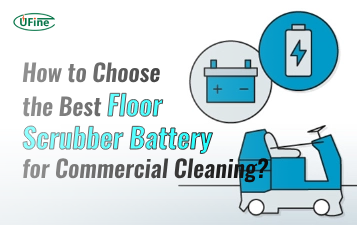
How to Choose the Best Floor Scrubber Battery for Commercial Cleaning?
Selecting the ideal floor scrubber battery ensures a long runtime, rapid charging, and minimal maintenance for efficient commercial cleaning operations.
Battery for Blower vs Battery for Leaf Vacuum: Which One Should You Choose?
Battery for blower vs leaf vacuum—learn the key differences in power, fit, and runtime to choose the right battery for your outdoor tool needs.
How to Choose the Right Battery for Blower?
Choosing the right blower battery? Consider voltage, capacity, chemistry & usage. This guide helps match the best battery for peak performance.
How to Choose the Best Insulated Battery Box for Lithium Batteries?
Choosing the Best Insulated Battery Box for Lithium Batteries? Discover key factors such as size, material, and safety for optimal protection and performance.
7 Critical Elements on a Lithium Battery Shipping Label
What must be on a lithium battery shipping label? Learn 7 key elements to ensure safety, legal compliance, and correct handling across all transport modes.
